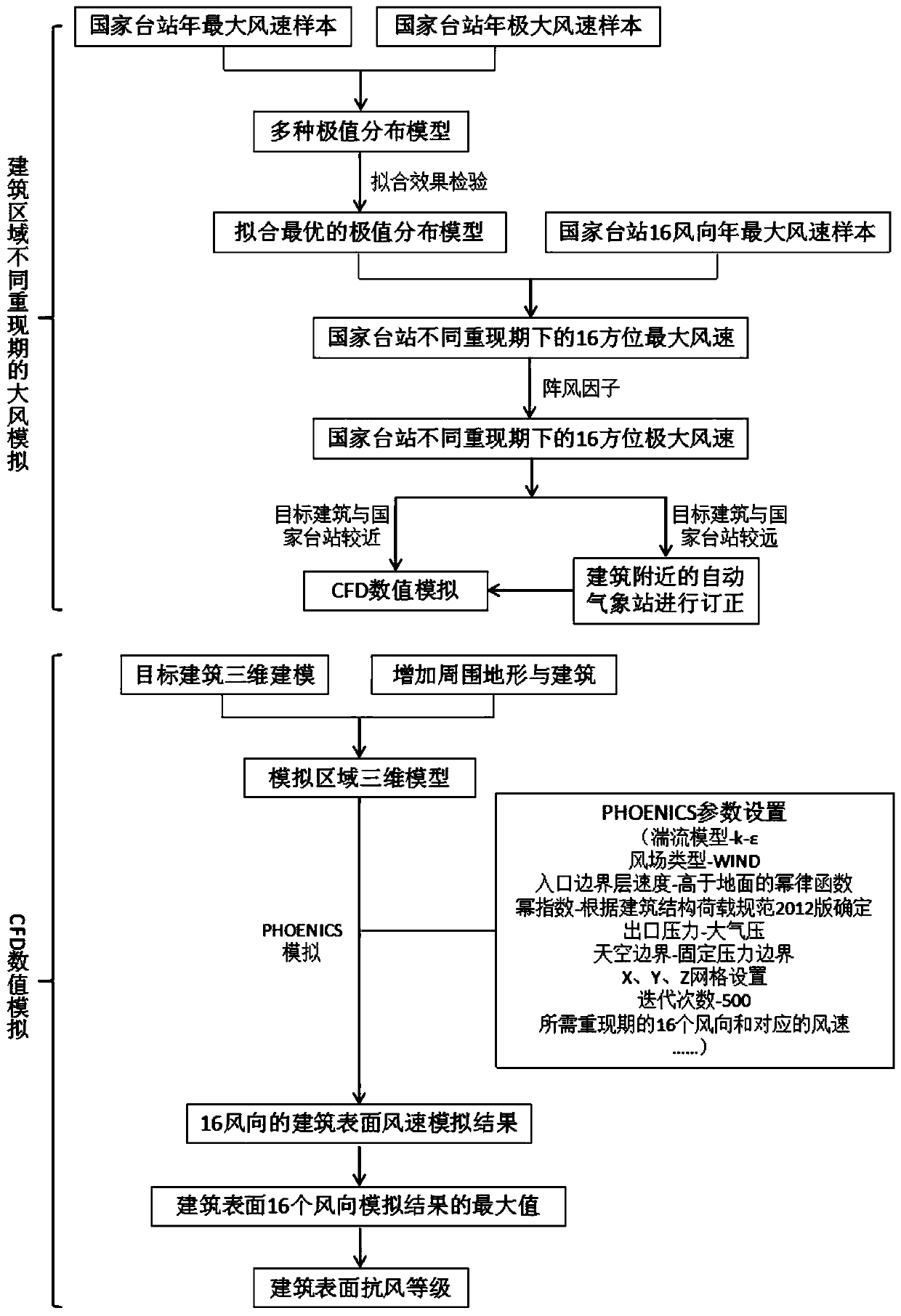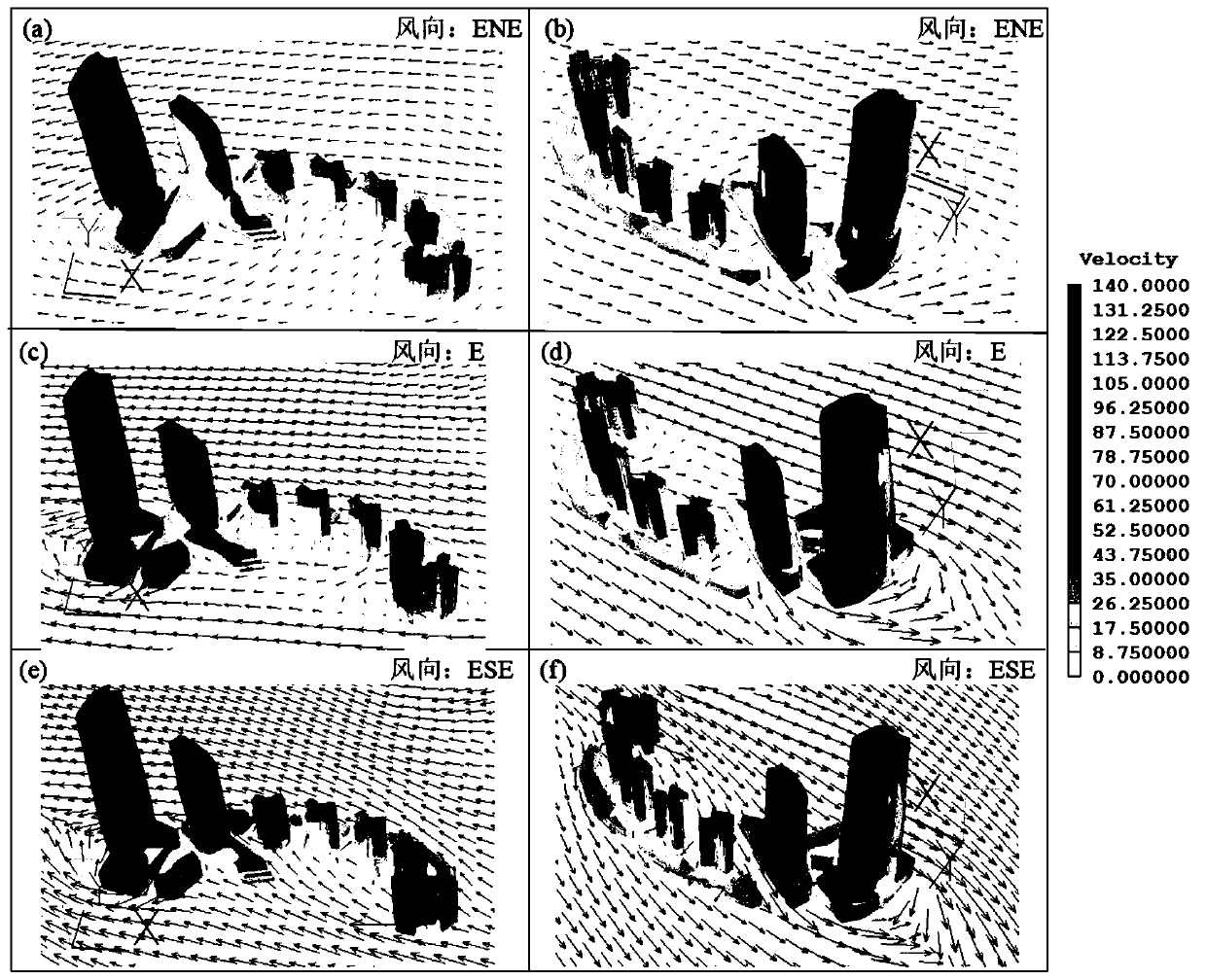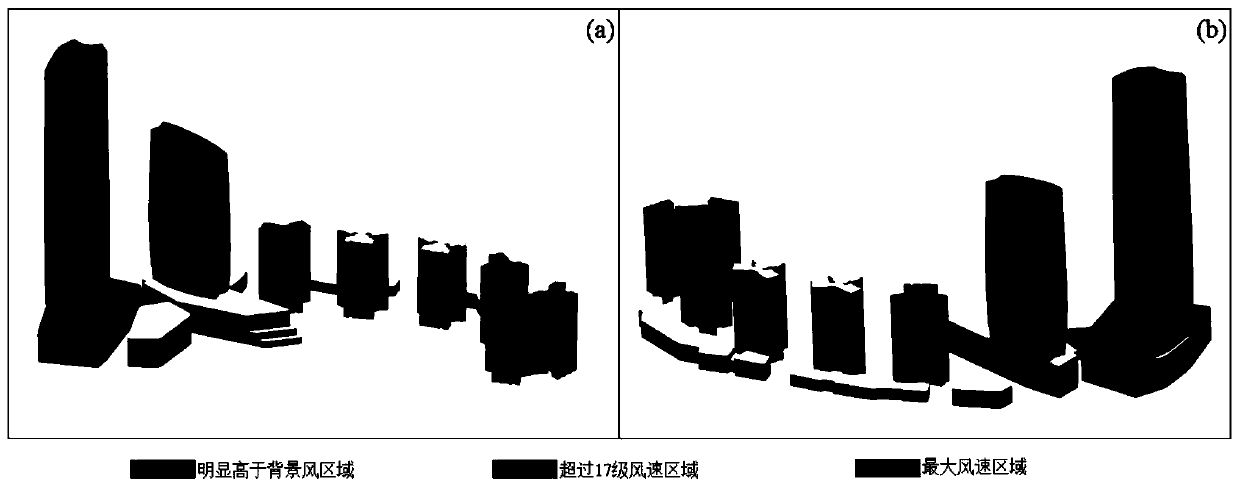Building surface wind resistance grade design method based on climate analysis and numerical simulation
A technology of numerical simulation and design method, applied in the field of advanced design, can solve the problem of not considering the wind direction, etc., and achieve the effect of cost saving
- Summary
- Abstract
- Description
- Claims
- Application Information
AI Technical Summary
Problems solved by technology
Method used
Image
Examples
Embodiment Construction
[0038] The present invention will be further described below in combination with specific embodiments.
[0039] In this embodiment, the wind resistance grade design method of the building surface based on climate analysis and numerical simulation takes a certain landmark super high building group in Jinwan District, Zhuhai City as an example, and analyzes the wind resistance grade of the building surface, referring to figure 1 ,Specific steps are as follows:
[0040] 1. Simulation of strong winds with different return periods in the building area
[0041]The return period calculation needs to be based on long-term climate statistics, the longer the data, the more accurate the calculation results. The data of national stations generally have a long period of time, which can be used as samples for extreme value distribution models, and then simulate extreme winds under different return periods. But sometimes the national station is far away from the target building. For exampl...
PUM
 Login to View More
Login to View More Abstract
Description
Claims
Application Information
 Login to View More
Login to View More - Generate Ideas
- Intellectual Property
- Life Sciences
- Materials
- Tech Scout
- Unparalleled Data Quality
- Higher Quality Content
- 60% Fewer Hallucinations
Browse by: Latest US Patents, China's latest patents, Technical Efficacy Thesaurus, Application Domain, Technology Topic, Popular Technical Reports.
© 2025 PatSnap. All rights reserved.Legal|Privacy policy|Modern Slavery Act Transparency Statement|Sitemap|About US| Contact US: help@patsnap.com



